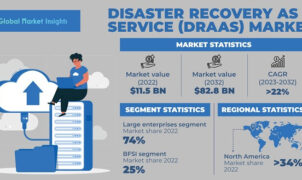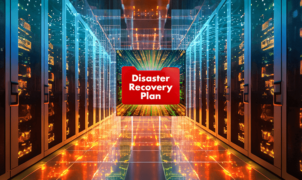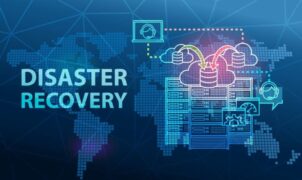Emergency response involves processes to minimize damages designed to cope with emergency situations and handle incidents. It encompasses not only immediate response but also includes pre-planned steps and procedures to ensure effective preparedness and response in any situation.
I. Why Every Business Needs a Detailed Emergency Response Plan?
In today’s world, businesses face a variety of hidden risks such as natural disasters, catastrophes, technical incidents, and terrorism, among others. The absence of a detailed emergency response plan can put a business in a precarious situation financially, in terms of human resources, and reputation.
Emergency response plans for specific situations play a crucial role in protecting a business by minimizing casualties and damages. Firstly, it helps businesses identify and assess potential threats, then develop specific strategies to minimize casualties and damages when an incident occurs.
Moreover, an emergency response plan helps businesses minimize disruptions in their operations. This is achieved by supporting the business recovery process quickly and efficiently after an incident, reducing downtime.
Another advantage of having a detailed emergency response plan is that it helps businesses comply with legal regulations. Many legal regulations require businesses to have an emergency response plan, and implementing a detailed plan makes it easier for businesses to comply with these regulations.
To build a detailed emergency response plan, businesses need to start by assessing risks, identifying potential threats to the business. Then, they need to develop specific response plans for each type of risk. Testing and updating the plan are also crucial processes to ensure that it always operates effectively and reflects changes in the business environment.

II. How to Identify Common Risks and Threats in an Emergency Response Scenario?
Identifying potential risks and threats is an essential and meticulous part of the emergency response plan development process. This not only helps recognize all potential threats but also shapes the prevention and response processes for maximum effectiveness.
There are several detailed methods for identifying potential risks and threats, and here are some specific approaches:
Environmental Analysis:
Evaluate all environmental factors, both internal and external, that could lead to incidents such as storms, floods, earthquakes, or business operations and production-related activities.
Identify social factors such as terrorism or unrest, which are also crucial aspects of this analysis.
Past Analysis:
Study the detailed history of previous incidents to understand potential hidden risks that the business may face in the future.
Expert Interviews:
Incorporate expert opinions and knowledge from safety and environmental experts for a deeper and more comprehensive insight into potential risks and threats.
Once potential risks and threats are identified, the next step is to assess their severity to develop specific preventive and responsive measures. Examples of common risks and threats that may occur in an emergency scenario include natural disasters like hurricanes, floods, earthquakes, environmental incidents like chemical spills, environmental pollution, occupational accidents like explosions, electrocutions, along with terrorist incidents such as biological terrorism, chemical weapons terrorism, and other incidents like power outages, water shortages. This is not a one-time task and should be conducted regularly to ensure continuous safety for people and property.
III. The Process of Creating an Emergency Response Plan Ensuring Effectiveness and Flexibility
An emergency response plan is considered effective and flexible when it adheres to the following principles clearly and in detail:
Specific and Detailed:
Risk Analysis and Scenario Assessment: The plan is built based on a detailed analysis of risks and a specific assessment of the business’s emergency situation. The content of the plan must be presented clearly, in detail, easy to understand, and actionable.
Effectiveness:
Goal of Minimizing Damages: The plan is designed with the goal of minimizing damages to people and property when an incident occurs. Evacuation plans, rescue measures, and post-incident recovery measures are clearly defined in the plan.
Flexibility:
Adaptation to Every Emergency Situation: The plan has flexibility to adapt to various emergency situations. It can adjust details of the plan depending on the actual situation.
The process of creating an effective and flexible emergency response plan includes the following steps:
Step 1: Identify Potential Risks
Businesses need to identify potential risks, including explosions, workplace accidents, oil spills, natural disasters, and other incidents.
Step 2: Evaluate Emergency Situations
Based on identified risks, businesses evaluate the severity of emergency situations and determine necessary response measures.
Step 3: Develop Detailed Emergency Response Plan
The plan includes evacuation plans, rescue and relief measures, and post-incident recovery measures. All content must be presented clearly and comprehensively.
Step 4: Conduct Drills
Businesses need to conduct drills to test the feasibility of the plan, identify and address deficiencies, and improve emergency response skills of employees.
Step 5: Monitor and Update the Plan
The plan needs regular monitoring and updating to ensure effectiveness and flexibility, responding to changes in business environments and legal regulations.
Building a detailed, effective, and flexible emergency response plan is crucial for every business, helping to minimize damage when incidents occur.
IV. Building the Team and Resources Necessary to Cope with Emergency Situations
Emergency situations can occur anytime, anywhere, bringing severe consequences for people and property. Therefore, building a team and resources to cope with these situations becomes extremely important.
Emergency Response Team:
This team comprises individuals trained in emergency response procedures. Depending on the business size and nature, the team may include first aid responders, fire marshals, and other specialized personnel. Training these individuals is crucial to ensure they can act promptly and effectively during an emergency.
Emergency Resources:
These include physical resources such as first aid kits, fire extinguishers, emergency lights, and communication devices. Adequate training on the usage of these resources is necessary.
Communication Plan:
A well-defined communication plan is essential to ensure that information flows smoothly during an emergency. This involves establishing communication channels, identifying key contacts, and setting up communication protocols.
Collaboration with External Agencies:
Businesses should establish collaboration with external emergency response agencies such as local fire departments, medical services, and law enforcement. This collaboration ensures a coordinated and effective response during emergencies.
Continuous Training and Drills:
Regular training sessions and emergency drills are vital to keep the emergency response team and other employees well-prepared. These activities help identify areas for improvement and ensure that everyone knows their roles and responsibilities.
V. The Importance of Regular Testing and Updating of the Emergency Response Plan
Creating an emergency response plan is not a one-time task. To ensure its effectiveness, the plan must be regularly tested, updated, and improved. This ongoing process helps businesses adapt to changes in the environment, regulations, and internal operations.
Testing the Emergency Response Plan:
Conduct regular drills and exercises to simulate emergency situations. This allows the emergency response team and employees to practice their roles and identify any shortcomings in the plan.
Gathering Feedback:
After each drill or exercise, collect feedback from participants. This feedback provides valuable insights into the effectiveness of the plan and helps identify areas for improvement.
Updating the Plan:
Based on feedback, changes in regulations, or any changes in the business environment, update the emergency response plan accordingly. Ensure that all employees have access to the latest version of the plan.
Staying Informed:
Stay informed about emerging risks, new technologies, and best practices in emergency response. This information can be crucial in enhancing the plan and keeping it up-to-date.
Regular Audits:
Conduct regular audits of the emergency response plan to ensure that it aligns with the current needs of the business. An audit helps identify any discrepancies and ensures the plan’s continued relevance.
VI. Conclusion
An effective emergency response plan is a critical component of any business’s risk management strategy. It provides a structured approach to handling emergencies, protecting lives, property, and the business’s reputation.
By identifying potential risks, developing a detailed plan, building a capable emergency response team, and regularly testing and updating the plan, businesses can enhance their resilience and readiness to face unforeseen challenges.
Investing time and resources in creating and maintaining an emergency response plan is not just a legal requirement; it is a responsibility to the employees, customers, and the community at large. It reflects a commitment to safety, preparedness, and the overall well-being of the business and its stakeholders.
Cre: antoannamviet


















































































































































